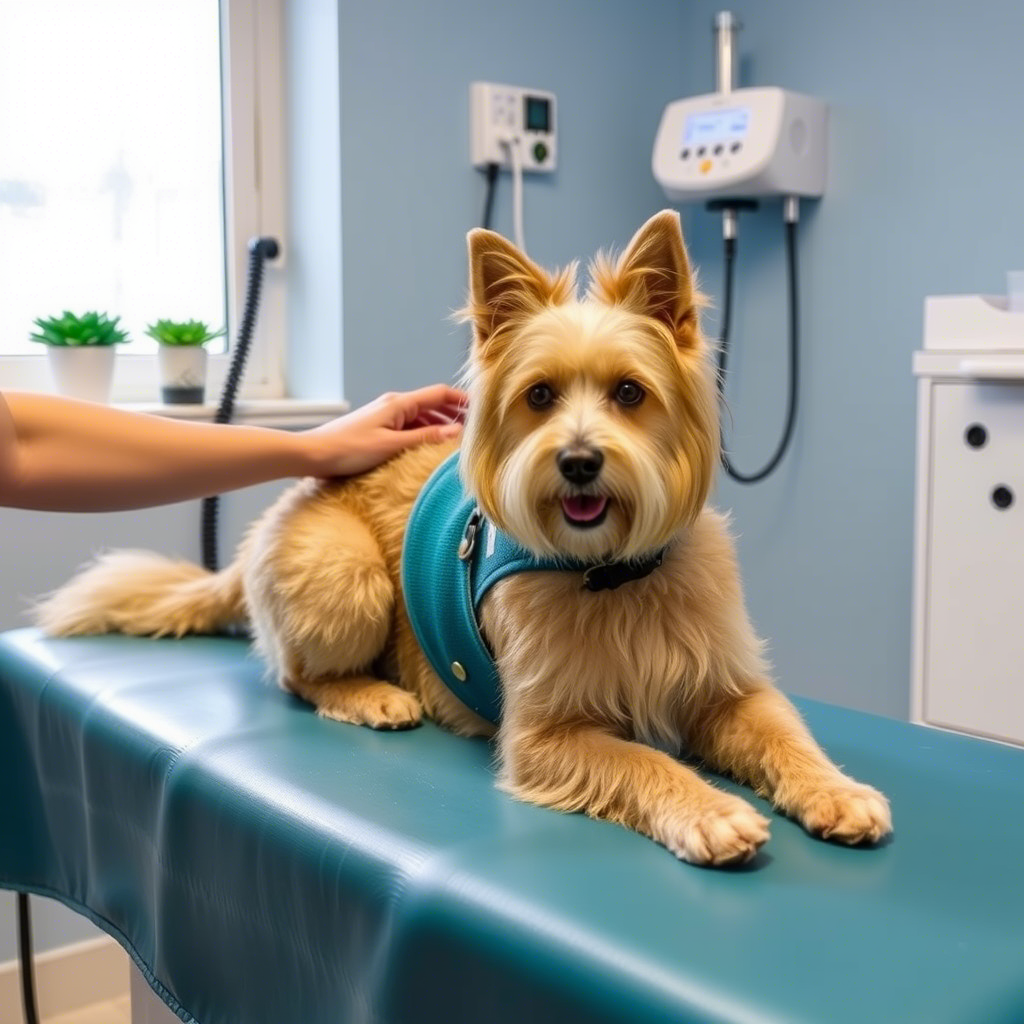VET Ultrasonic Therapy is a valuable treatment modality in veterinary medicine, offering a non-invasive and effective means of promoting healing, reducing pain and inflammation, and improving tissue repair.
VET Ultrasonic Therapy
VET Ultrasonic Therapy English
VET Ultrasonic Therapy is a non-invasive treatment method used in veterinary medicine to promote healing, reduce pain and inflammation, and improve tissue repair. This therapeutic modality has gained popularity among veterinarians due to its effectiveness in managing various conditions in animals. The use of ultrasonic therapy in veterinary practice is based on the principle that high-frequency sound waves can stimulate cellular processes, enhancing the body's natural healing mechanisms. As a result, VET Ultrasonic Therapy has become an essential tool in the management of musculoskeletal injuries, post-operative care, and rehabilitation of animals. With its non-invasive nature and minimal side effects, this therapy is particularly beneficial for animals that are sensitive to pharmaceuticals or have conditions that preclude surgical intervention.
Principles of Ultrasonic Therapy
Ultrasonic therapy works by applying high-frequency sound waves to the affected area, typically in the range of 1-3 MHz. These sound waves generate micro-massage effects in the tissues, increasing blood flow and reducing inflammation. The therapy can be administered in various modes, including continuous and pulsed, to suit different conditions and treatment goals.
- The frequency and intensity of the ultrasonic waves are adjusted based on the specific condition being treated and the individual animal's response.
- The treatment duration and frequency also vary depending on the condition, with some cases requiring multiple sessions per week.

- Ultrasonic therapy devices are designed to deliver precise control over the treatment parameters, ensuring safe and effective application.
Applications in Veterinary Medicine
VET Ultrasonic Therapy has a wide range of applications in veterinary medicine, including the management of musculoskeletal injuries, post-operative care, and rehabilitation.
- Musculoskeletal injuries, such as tendonitis and ligament sprains, can be effectively managed with ultrasonic therapy, reducing pain and inflammation and promoting tissue repair. For more information on the treatment of musculoskeletal injuries, visit https://www.mbs-med.com/.
- Post-operative care is another area where ultrasonic therapy is beneficial, as it can enhance wound healing, reduce scar tissue formation, and improve tissue strength.
- In rehabilitation, ultrasonic therapy is used to improve range of motion, reduce stiffness, and promote functional recovery in animals with orthopedic or neurological conditions.
Benefits and Advantages
The benefits of VET Ultrasonic Therapy include its non-invasive nature, minimal side effects, and ability to promote tissue repair and healing.
- The therapy is generally well-tolerated by animals, with most experiencing minimal discomfort or adverse reactions.
- Ultrasonic therapy can be used in conjunction with other treatment modalities, such as physical therapy and pharmacological interventions, to enhance its effectiveness.

- The use of ultrasonic therapy in veterinary clinics has become increasingly common, reflecting its growing acceptance as a valuable treatment option.
Case Studies and Examples
Several case studies and clinical trials have demonstrated the effectiveness of VET Ultrasonic Therapy in various veterinary applications.
- A study on the use of ultrasonic therapy in the management of osteoarthritis in dogs found significant improvements in pain and functional ability.
- Another case series reported successful outcomes in the treatment of post-operative wounds in horses using ultrasonic therapy.

- Rehabilitation centers are increasingly incorporating ultrasonic therapy into their treatment protocols, as seen in this image, highlighting its role in promoting functional recovery in animals.
Future Directions and Research
Ongoing research is focused on exploring new applications and optimizing treatment protocols for VET Ultrasonic Therapy.
- Studies are investigating the use of ultrasonic therapy in the management of various conditions, including neurological disorders and wound healing.
- Advances in technology are leading to the development of more sophisticated ultrasonic therapy devices, offering improved treatment outcomes and greater ease of use. For the latest developments in veterinary medical technology, you can check https://www.mbs-med.com/product-category/veterinary-ultrasound/.
Conclusion
VET Ultrasonic Therapy is a valuable treatment modality in veterinary medicine, offering a non-invasive and effective means of promoting healing, reducing pain and inflammation, and improving tissue repair. Its applications in musculoskeletal injuries, post-operative care, and rehabilitation make it an essential tool in the management of various conditions in animals. As research continues to uncover new applications and optimize treatment protocols, the role of ultrasonic therapy in veterinary practice is likely to expand, providing improved outcomes for animals and their owners.
